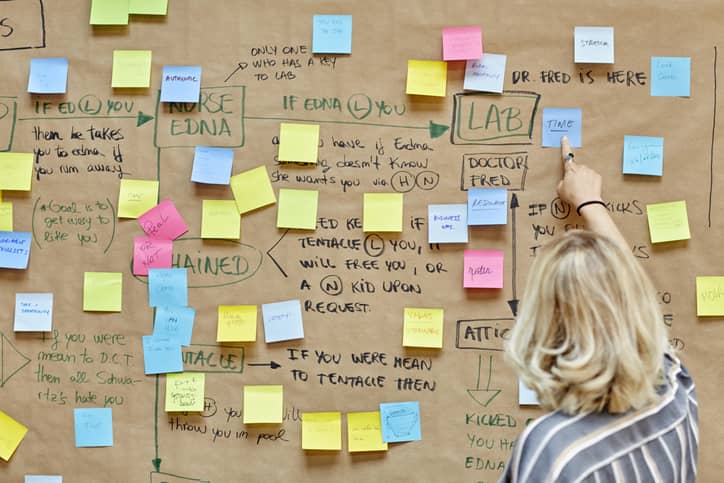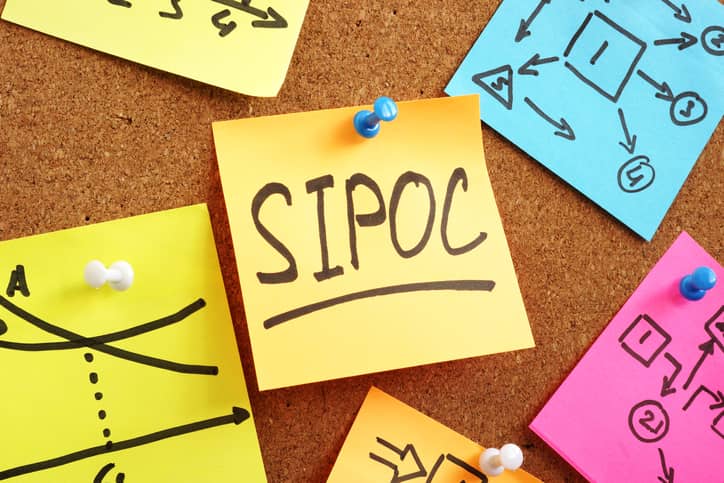Created for use in manufacturing, Six Sigma and Lean have since been put to use in a number of industries. That includes healthcare, information technology and even government.
Another industry that business leaders have found can greatly benefit from Lean and Six Sigma is retail. Companies that have implemented the methodology include Amazon, Best Buy, Big Lots, Home Depot, Lowe’s and many more.
Much like manufacturing, retail involves a series of interlocking operations that bring a product from the supplier’s warehouse to the customer’s cart while they stand in the checkout line (whether it’s a traditional line or one online).
Each of the steps along the way offer a chance to apply the methodologies of both Lean and Six Sigma. Recognizing where and how that can be accomplished is the first step for retailers.
Checking Out
Let’s begin with the end. Because this is far and away the most important customer-facing moment in retail. If a customer spends 59 pleasant minutes shopping and the last minute involves a problem with checkout, that’s what the customer will remember.
There are many links in the chain of a successful customer checkout. Employee interaction. Availability of inventory. A sufficient number of registers to avoid long waits. A good Lean tool here is Value Stream Mapping, which breaks down each phase of the process into segments and determines what is adding value and is what is not. Obviously, the latter must go.
The Five Whys can also be put into play to determine the root cause of operational problems that need to be solved. And a Flow Chart can also help map out a process and produce a more efficient operation.
Understanding Customers
There’s perhaps no better story about how you must know your customers than the McDonald’s milkshake story. Rather than focus on the product – let’s keep trying to make the perfect milkshake and sales will increase! – they focused on what customers actually wanted. Long story short – people wanted milkshakes in the morning to lessen the boredom of long commutes and to stave off hunger until lunch. They then adjusted the product to meet those demands and marketed it to the right audience.
This type of focus on the needs of customers underpins much of Lean and Six Sigma. Tools such as the Kano Model (see below) can be used in such cases.
Marketing and other operations – finance, purchasing and product development – also can be evaluated using a Six Sigma Balanced Scorecard. This technique ensures that all of the units within a business are working in a way to serve overall business strategy and goals.
Apply The Kano Model
An excellent way to evaluate the needs of customers is provided by the Kano Model. Developed in the 1980s by Japanese academician Noriaki Kano, the purpose of the model is to create a customer-focused business. It does so by measuring the products and services of a business against data gathered from customers in three key areas:
- Basic/must haves – Why do people come to your retail establishment? What do they expect when they arrive?
- Performance – Data from customers on how well the product or service performed.
- Excitement – These are the aspects of a business that go above and beyond customer’s basic expectations – they surprise and delight customers.
Retail is always customer-focused, right? Wrong. Think about your own retail experiences. Long waiting lines. Products not for sale as advertised. Inconsistent inventory. Poor customer service. And those are all in the “basic/must-have areas.” A Kano Model can help identify trouble spots that need correcting as well as new opportunities to serve customers.
New Retail Services
Six Sigma provides two main processes for streamlining an existing operation or creating a new product or service. In the case of retail, the focus is often on the latter.
The Six Sigma methodology DMADV is designed to create a new process that results in a quality product or service, while also keeping customer needs foremost. A project using DMADV is segmented into distinct phases: define, measure, analyze, design, verify.
The system was established to provide a framework for creating a product in a factory. But it can also apply to getting a product from the supplier to the store shelves.
A retailer considering the sale of a new product could apply DMADV to determine a customer need, measure and analyze the steps it would take to fill that need, design a system to efficiently get the product on the shelves and then verify whether it’s fulfilled the customers’ need and been profitable for the business.
Cut the Waste
Lean is especially useful for cutting waste. And there’s typically plenty of it in retail.
The eight areas of waste that Lean seeks to eliminate are: motion, waiting, unused employee talent, managing inventory, defects, overproduction, transportation and non-value adding processing.
Processes from purchasing and inventory to display and checkout can be evaluated using Lean tools. Because retail operations have so many moving parts, challenges can arise in a wide variety of areas, from looking for better wholesale suppliers to reducing the amount of movement employees must make around the store.
Those are some of the ways retailers can leverage Six Sigma and Lean tools and techniques. But that’s just a taste. Do your own research into the many different tools available.



